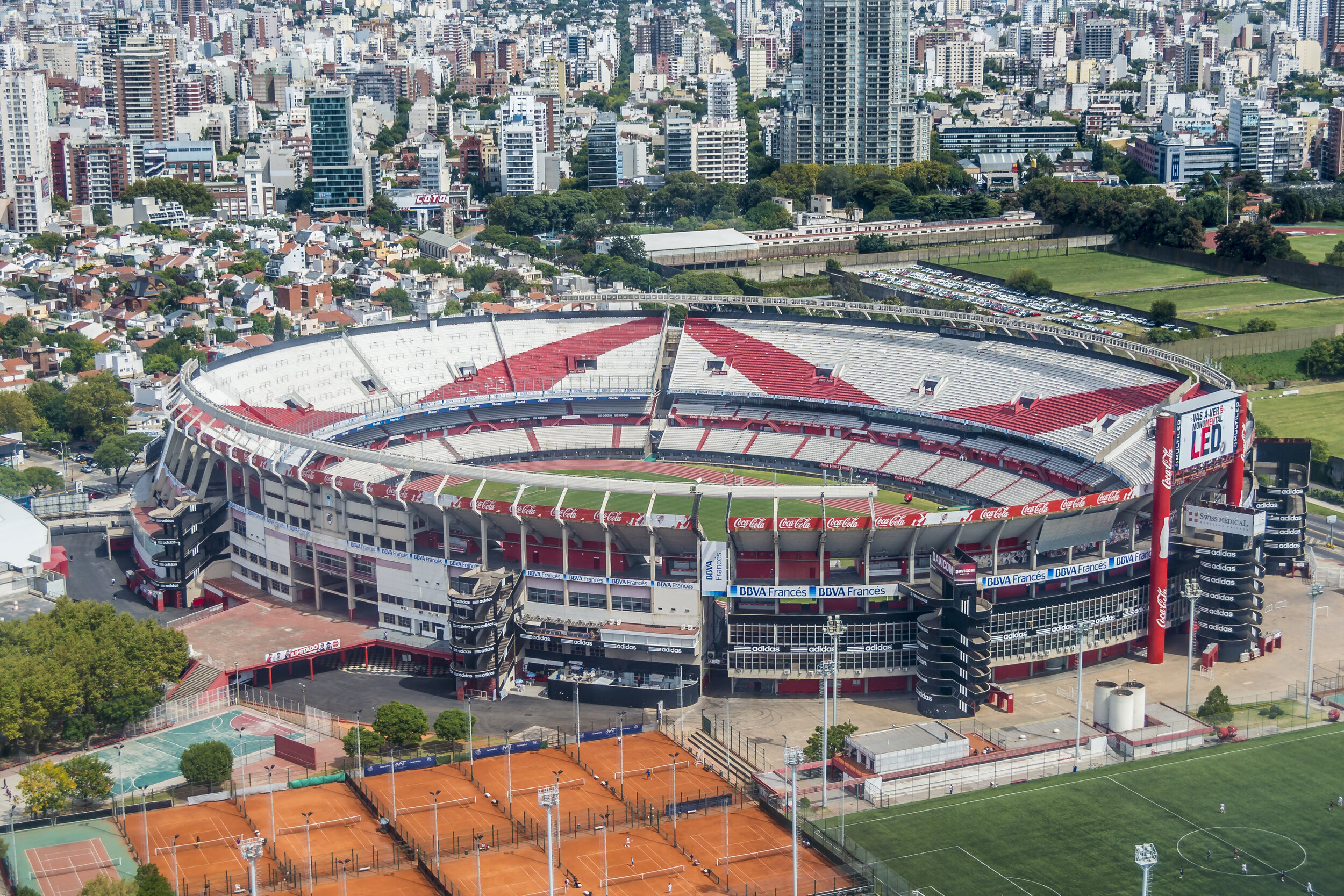Hello, this post allows me to break away from my usual Football Manager writing and explore tactical concepts around the World in the attempt to translate them into Football Manager. The aim would be to write about teams that are not at the forefront for most European readers, so there’s likely to be no English Premier League or German Bundesliga analysis here!
Disclaimer: interpreting real world tactics and applying them into Football Manager is easier said than done. Often a team will have several systems that are deployed throughout the match based on in-game scenarios and events, making it very hard to translate this into Football Manager. So I’ve taken what I think are the key elements of their systems and player roles, based on observing key moments of real-life matches.
Part One - Racing Club’s 4-1-3-2 🇦🇷
Part Two - San Jose Earthquakes’ 4-2-3-1 🇺🇸
For my third instalment of this series, I once again look at a talented Argentine manager…who has undoubtedly outshone the previous two managers I have previously focused on (Eduardo Coudet & Matías Almeyda). Grab a latte, tea or yerba mate and return to Argentina with me…
Intro
Marcelo Gallardo’s playing career ended in Uruguay, as a title winner with my FM20 arch rivals Nacional.
The Argentine Superliga returns to my life next week, after a near two month hiatus (strike dependant of course). During this time, there was one manager who I expected to leave Argentina when FC Barcelona’s hotseat became vacant: his name is Marcelo Gallardo. It’s my personal view that Gallardo’s brand of attacking and high intensity football would be revered by the culés of Barcelona. Yet, following Quique Setién’s appointment…Gallardo once again is overlooked and remains in his native homeland with River Plate.
Despite cruelly losing 2019’s Libertadores Final to Flamengo and ending the mid-season Superliga break in 5th position, Gallardo’s time at River has been a rip-roaring success. Becoming their most successful manager with an incredible 6 continental titles in the last 5 years (x2 Copa Libertadores, x1 Copa Sudamericana and x3 Recopas).
Unlike Barcelona’s new coach, Quique Setién, who favours a consistent tactical approach; Gallardo has instead been known to use a few fluid arrangements, usually with a holding pivot. Sometimes it will be a diamond 4-4-2, often a 4-1-3-2 and sometimes even a back three in a 3-4-1-2 or 3-1-4-2. For the purposes of today’s post however, I am basing my replication on the more prevalent use of a 4-1-3-2. Let’s begin…
Team Philosophy & Formation
A lot of literature exists around Gallardo’s River Plate, so I don’t feel the need to repeat their assessments here. In fact, on the most part, it’s challenging to summarise Gallardo’s teams concisely in a single blog; due to the sheer amount of players that have come and gone during his 5 years at River. This isn’t Gallardo’s fault, but rather the endemic nature of how football transfers happen in Argentina…with the young talent being sold to Europe at any sign of potential (Alario, Driussi & Saracchi to name just three recent departures). The current Gallardo team however sees Enzo Pérez sit as a pivot and link between the marauding midfield and also…the marauding Centre Backs. Gallardo’s team is one of possession, relentless pressing and an ambition to control the game in the opposition’s half.
The Wing Backs provide the width in this narrow formation, but it’s the trio of young players in midfielder that exemplify Gallardo’s style: creativity, dribbling, speed and stamina. So I have gone for a rather ambitious central trio of: Roaming Playmaker sitting between two Mezzalas. If all goes to plan, these players will dominate the ball and use it well…providing the strikers ammunition to shoot and score.
I have opted for a Deep Lying Forward + Advanced Forward combination, not only is this familiar to me…I also like the dynamic between Matías Suárez & Rafael Santos Borré. It is nice to have the older head as the supportive player, which happens to be Matías Suárez (31). He has a creative spark and good scores in Decisions and Flair, which means he is a handful dropping back ‘in the hole’ to link up the play. On the flip side, Advanced Forward, Rafael Santos Borré (21) will stretch the play; he likes to beat the offside trap and has the exuberance of youth on his side with high physicals and great Work Rate.
Gallardo’s team typify the ideology of a relentless press, by denying the opposition a chance to play. So, I’ve chosen a slightly more aggressive team mentality of Positive combined with ‘Counter’ and ‘Counter Press’ Team Instructions. I have also instructed the team to ‘Get Stuck In’ after enjoying the ferocity of their behaviour in the Copa Libertadores Final against Flamengo. Note - use this Team Instruction with caution, as in some games I had to turn it off mid-way through as we were amassing yellows. Sometimes just the mentality combined with Counter Press is enough for them to play with fire 🔥
In Football Manager 2020, I translate 2019/20 River Plate’s tactic as:
In Possession.
In Transition.
Out of Possession.
Specific Player Roles
There is no desire to break down every role in Gallardo’s team here, but two important roles that make the midfield so effective are the Half Back and the Mezzala(s).
Half Back
Enzo Pérez - The Pivot.
Despite not appearing as a glamorous role, the Half Back is the crux of what makes everything else work ahead of it. Enzo Pérez’s pivot role is similar to Marcelo Díaz’s in Racing’s title winning team of 2019, which I also wrote about. For this role to work, you need a player with great Positioning and other strong mental attributes such as Anticipation and Decisions. He’ll look to recycle the ball and offload it to the dynamic three central midfielders ahead of him.
HB Cover in FM20.
You can see from the above that an opposition striker is positioning himself between our two central defenders. It’s a clever place to sit, as it gives us a problem. However, the Half Back is disciplined enough to read the pass…and recover ground in order to get back and recycle possession. This clever understanding of the game, and application to the role, kick started a move that brought about a River goal. The Half Back in this moment in time was as fundamental to the team move than the assist or the goal itself.
The Mezzala(s)
Nico De La Cruz - Mez (Support).
‘Nacho’ Fernández - Mez (Attack).
I really like the way the Mezzala operates in this 4-1-3-2, so why not go double? The Mezzala will attack the space between where a traditional Winger and a conventional Attacking Midfielder would sit, this is known as “the half space”. It’s here, in this golden sweet spot, where the Mezzala can operate with good creativity and dribbling.
I have used De La Cruz and Fernández here and they were sublime, benefiting from the shorter passing and a more laissez-faire approach to attacking play. Especially Nacho Fernández, who has a Very Attacking mentality when playing as the Attacking Mezzala role in this system; meaning he has a free licence to support attacks and play in the forwards.
It also arcs back to what I said in the intro: Gallardo demands a midfield that is full of creativity, dribbling, speed and stamina. These guys are perfect for it, and what’s more…after a few months of rehabilitation, possibly the best player on the continent: Juan Fernando Quintero will return from his knee injury. Another player who I believe can play the Mezzala exceptionally well.
Replicating Real Life
We have to appreciate that Football Manager is a game, but there are elements of River Plate’s real-life game that appear to be reflected well. Here’s an example of the Half Back’s positioning and behaviour to deal with a long ball, it’s exactly what I wrote about earlier on. It’s taken from the 2019 Libertadores Final, and despite losing out on the day…I felt River Plate were unlucky not to win the trophy. Especially in the first 15 minutes, where Flamengo simply couldn’t contain the relentless Gallardo-ball.
You can see it’s exactly like what we saw earlier, with Enzo Pérez mopping up a long ball as part of our pivot:
HB Cover IRL.
Pressing
Despite the two examples below showing pressing in different locations of the pitch, they both show the swarm of River Plate players amassing to deny the opposition any real meaningful amounts of possession. Our example Vs Grêmio leads on to a nice counter attacking goal, where the ball is released to Deep Lying Forward: Matías Suárez.
Pressing IRL.
Pressing in FM20.
In the 4-1-3-2 tactic I built for this post, I left the pressing and defensive lines as they are (on standard), as we are already on a positive mentality. But in order to replicate Gallardo’s flexible pressing triggers you can simply adjust mentality or do it manually to suit your game situation. In order to be like Gallardo, I would recommend pressing the life out of weaker sides in order to suffocate them. But be more conservative against bigger opposition, or teams you feel have a good counter in them and who can escape the press.
Beautiful Football
My belief that Gallardo would be a good tactical fit for FC Barcelona is due to the passing combinations his River Plate team play: something that the Catalan club also demands from its players. I saw a lot of this beautiful football within my FM20 play-through:
Beautiful Football 1.
Beautiful Football 2.
The new v2031 Public Beta FM20 match engine (to grab this new build, click here), demonstrates the characteristics of Gallardo-ball.. Characteristics that are documented over on WhoScored.com (see below). By looking at the “Style of Play” to the right hand side, you can see how it links back to the Team Instructions I used at the start of this post:
Overall, this is a really fun tactic to play with, it has a good variety in attack and some lovely interchanges between a youthful & exciting midfield. I played 10 games, winning 9 and drawing once (to Grêmio in the Copa Libertadores) Goals For: 24 and Goals Against: 5. If you can’t be bothered to set up the tactic as detailed above, I have also published it to the Steam Workshop. Left click on the image below and download into Football Manager 2020…
As always, thanks in advance for any shares on this piece. Please let me know if you try this system with either River Plate, or any other team. It would be interesting to see how you get on.
FM Grasshopper


